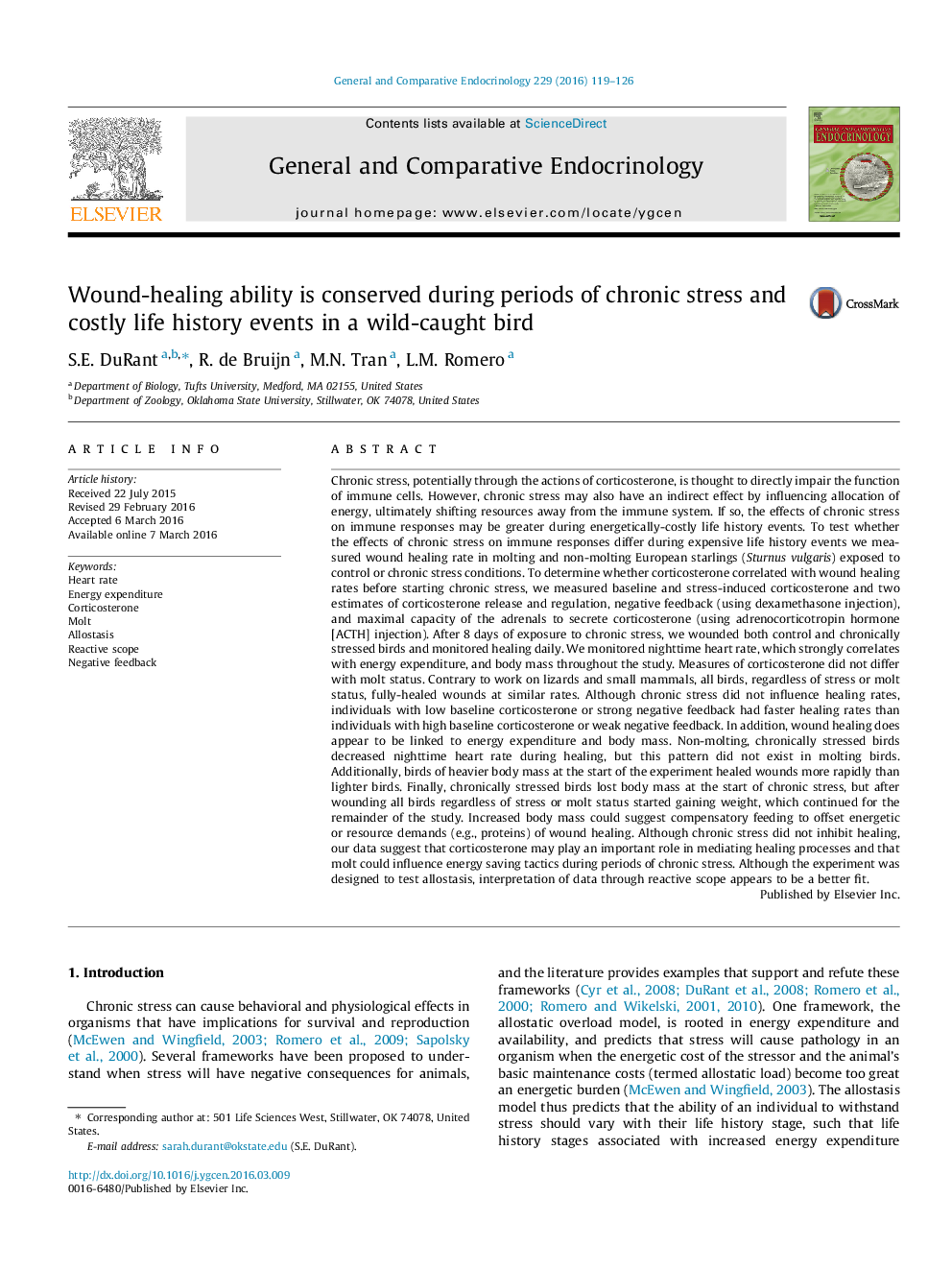| کد مقاله | کد نشریه | سال انتشار | مقاله انگلیسی | نسخه تمام متن |
|---|---|---|---|---|
| 2799846 | 1568877 | 2016 | 8 صفحه PDF | دانلود رایگان |
• Wound healing is preserved during periods of chronic stress and a costly life history event (molt).
• Birds with high body mass, low baseline corticosterone, or strong negative feedback heal faster.
• Chronic stress birds that are not molting employ nighttime energy saving tactics during healing.
Chronic stress, potentially through the actions of corticosterone, is thought to directly impair the function of immune cells. However, chronic stress may also have an indirect effect by influencing allocation of energy, ultimately shifting resources away from the immune system. If so, the effects of chronic stress on immune responses may be greater during energetically-costly life history events. To test whether the effects of chronic stress on immune responses differ during expensive life history events we measured wound healing rate in molting and non-molting European starlings (Sturnus vulgaris) exposed to control or chronic stress conditions. To determine whether corticosterone correlated with wound healing rates before starting chronic stress, we measured baseline and stress-induced corticosterone and two estimates of corticosterone release and regulation, negative feedback (using dexamethasone injection), and maximal capacity of the adrenals to secrete corticosterone (using adrenocorticotropin hormone [ACTH] injection). After 8 days of exposure to chronic stress, we wounded both control and chronically stressed birds and monitored healing daily. We monitored nighttime heart rate, which strongly correlates with energy expenditure, and body mass throughout the study. Measures of corticosterone did not differ with molt status. Contrary to work on lizards and small mammals, all birds, regardless of stress or molt status, fully-healed wounds at similar rates. Although chronic stress did not influence healing rates, individuals with low baseline corticosterone or strong negative feedback had faster healing rates than individuals with high baseline corticosterone or weak negative feedback. In addition, wound healing does appear to be linked to energy expenditure and body mass. Non-molting, chronically stressed birds decreased nighttime heart rate during healing, but this pattern did not exist in molting birds. Additionally, birds of heavier body mass at the start of the experiment healed wounds more rapidly than lighter birds. Finally, chronically stressed birds lost body mass at the start of chronic stress, but after wounding all birds regardless of stress or molt status started gaining weight, which continued for the remainder of the study. Increased body mass could suggest compensatory feeding to offset energetic or resource demands (e.g., proteins) of wound healing. Although chronic stress did not inhibit healing, our data suggest that corticosterone may play an important role in mediating healing processes and that molt could influence energy saving tactics during periods of chronic stress. Although the experiment was designed to test allostasis, interpretation of data through reactive scope appears to be a better fit.
Journal: General and Comparative Endocrinology - Volume 229, 1 April 2016, Pages 119–126
